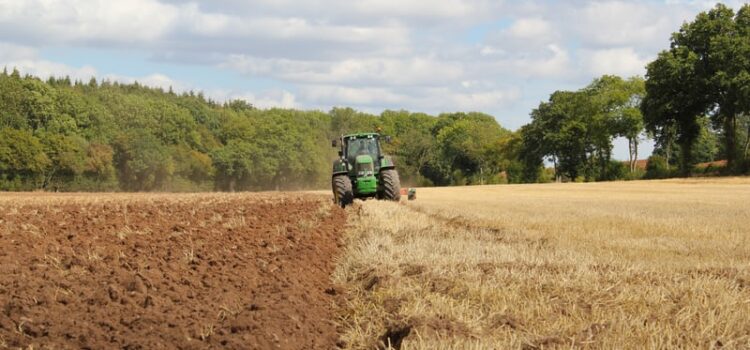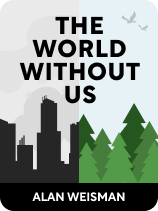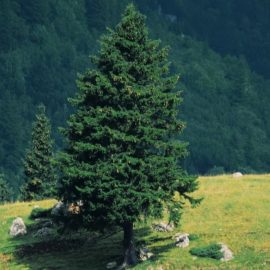

This article is an excerpt from the Shortform book guide to "The World Without Us" by Alan Weisman. Shortform has the world's best summaries and analyses of books you should be reading.
Like this article? Sign up for a free trial here.
Is farming good or bad for the land? How has agriculture changed the world’s landscape?
The human race has left a mark on our planet. In The World Without Us, science journalist Alan Weisman investigates that mark, including the impact of agriculture on the environment. He takes a historical look back and a speculative look forward to see what would happen if human activities ceased.
Read more to learn how farming impacts the Earth.
The Impact of Agriculture on the Environment
While our lives as hunter-gatherers had an impact on the wild, we truly began to reshape the world when we first learned how to farm. While agriculture has provided great benefits to the human species, freeing people from the constant hunt for food, it’s had a growing detrimental impact on the habitats of many other species, both plant and animal. Weisman discusses the impact of agriculture on the environment. He tells how the effects of farming have altered the landscape of the Old World and the New, and how modern farming practices using fertilizer and genetic modification, while drawing more produce from the soil than older methods, have had unintended consequences.
Farming begins with the clearing of land. Soil samples taken in Africa recount a history of agricultural deforestation reaching as far back as the Stone Age. Weisman writes that in a case of colossal bad timing, farming and cattle grazing developed in East Africa just as a shift in climate made the region drier, resulting in accelerated desertification, enlarging the Sahara at an artificial rate. Over 4,000 years ago, the forests of Europe were dealt a blow by farming, while 1,000 years ago the forests of central North America were cleared by the Mississippian culture to make way for the maize crops that supported their cities.
(Shortform note: In Sapiens, Harari argues that the agricultural revolution wasn’t a benefit for the majority of people, who worked harder and ate less healthy diets than their hunter-gatherer forebears. However, it did allow for the evolution of human social groups from simple tribal bands to formalized, self-perpetuating systems, as described by Frederic Laloux in Reinventing Organizations. These hierarchical societies formed the basis of the first civilizations, which propelled the spread of agriculture, conquest, settlement, and industry that shaped the world as we know it today.)
Now, farms and ranches cover a third of the world’s land, while producing more food than ever before. In the 1800s, farmers discovered that adding nitrogen and phosphate to the soil makes plants grow faster and larger. Unfortunately, it also reduces biodiversity by allowing a handful of crops to outcompete all other species. In the 20th century, farmers began using pesticides and added zinc and copper to animal feed to make livestock healthier. These excess metals are then passed into the soil via excrement. The result is an increase in man-made chemicals that drain from farms into streams, ponds, and rivers. Once there, the fertilizers let weeds and algae bloom out of control, removing oxygen from the water so that fish and other species die out.
In even more recent years, farmers have been planting genetically modified organisms (GMOs) that produce higher yields and are resistant to disease and pesticides. Some GMO crops can be highly invasive if their pollen and seeds get loose in the wild. Other GMOs are designed to be sterile—they can’t reproduce without human intervention. These crops, if left untended, can die out and leave behind barren plots of soil that can take decades to recover. GMOs let farms feed larger populations without using up more land, but Weisman says that it’s too soon to know the full ecological impact of replacing naturally adapted species with those created by humans.
| Is Modern Agriculture a Blessing or a Curse? Industrial farming practices have come under fire for reasons beyond their impact on the environment. The mass production of soybeans and corn for use in processed food has contributed to heart disease and obesity, while the addition of antibiotics to livestock feed has driven the evolution of antibiotic-resistant diseases. From an economic standpoint, industrial farms have driven small, locally-owned farms out of business, which has had a devastating impact on many rural communities. However, there’s a bright side to industrial farming. In Apocalypse Never, journalist Michael Shellenberger argues that in order to create a more sustainable future, we must embrace industrial farming practices, especially in the developing world. Because industrial farming allows more food to be produced on less land, it creates space for reforestation and allows people to adopt more energy-efficient urban lifestyles that go hand-in-hand with increased education, reduced birth rates, and opportunities for people to lift themselves out of poverty. |
Nature Strikes Back: A Post-Human World
Given all the ways in which we’ve reshaped the world and continue to affect it every day, Weisman asks a question that’s normally the purview of science fiction writers: What if the human race vanished all at once, but left all our buildings, roads, and power plants intact?
Despite the initial negative impact humanity’s absence would have on the world, the forces of nature would steadily recoup their losses. Given time, the natural world will erase the relics of our civilization, though the new status quo would be different than before because of human intervention. Forests would reclaim land that was cleared for human use, and wildlife would flourish in our absence, as evidenced by places in the world where humans have already disappeared. One example is New England, where Weisman notes that the forests returned to land once cleared by American settlers. Today, it takes a trained botanist’s eye to see where new growth covers farms from centuries past.
(Shortform note: Thanks to clear-cutting for agriculture and timber, only a quarter of New England’s forests remained intact at the end of the 19th century. Once those practices ended in the region, a mix of fast-growing hardwood trees began to spread across once-open farmland. Active conservation efforts took root in the middle of the 20th century, and today over a million acres of forest are protected in New England and neighboring New Brunswick in Canada.)

———End of Preview———
Like what you just read? Read the rest of the world's best book summary and analysis of Alan Weisman's "The World Without Us" at Shortform.
Here's what you'll find in our full The World Without Us summary:
- What would happen to Earth if the human race disappeared
- How the planet would benefit from a human extinction
- What the immediate vs. long-term effects would look like






